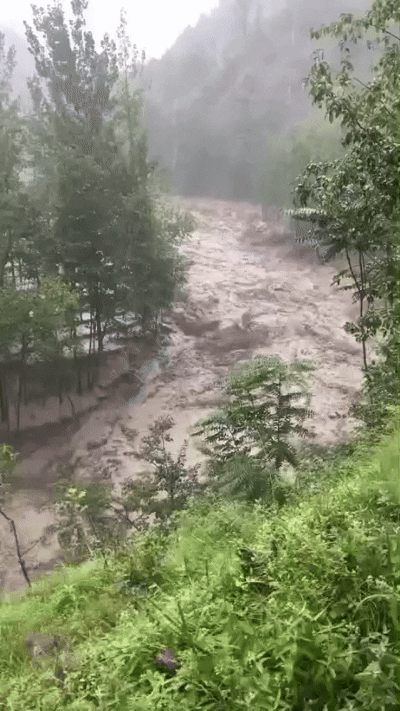Pakistan’s Flood Crisis 2025: My Experience, the Situation, Safety Tips, and How We Can Help
A Personal Note:
During my stay in Kashmir, I witnessed the collapse of a bridge located near my grandmother’s residence. This bridge also served as a vital connection between my aunt’s house and my grandmother’s, and more importantly, it was a crucial route for nearby villages to access Muzaffarabad. Observing the destruction of such an essential link was deeply concerning, as it highlighted the potential dangers in the event of an emergency when timely access to assistance would be severely hindered.
My time there also explains my recent absence, as limited network coverage made it extremely difficult to remain online. I have now returned to Islamabad, but the devastation I observed remains vivid in my memory.

Image credit: Author
Reflection:
This experience made me realize how unprepared we are for such natural disasters. The destruction of the bridge was not merely a snapped bridge, it revealed the speed at which lives, relationships, and security can vanish. Climate change is not something we discuss in the future anymore; it is already happening. We need stronger planning, better systems, and community support so that no one is left helpless when disasters strike again.

GIF credit: Author
Nationwide Flood Overview:
Pakistan is enduring one of its most devastating monsoon seasons in years.
- Khyber Pakhtunkhwa: Flash floods and cloudbursts have caused massive destruction. In Buner alone, hundreds were killed in a single event, and the province’s overall toll has climbed above 340.
- Azad Jammu and Kashmir: Heavy rains and landslides damaged infrastructure and isolated villages. Bridges, including one I personally witnessed collapse near my grandmother’s house, have left families cut off from Muzaffarabad.
- Sindh: Record-breaking rainfall has submerged entire neighborhoods. Karachi, built to handle around 40 millimeters of rain, was overwhelmed when nearly 180 millimeters fell in a single day.
- Punjab and Balochistan: Both provinces have been hit by urban flooding, landslides, and serious crop damage.
According to the National Disaster Management Authority, at least 507 people have died and more than 700 have been injured in rain-related incidents since late June. More heavy rains are forecast into late August and September, raising the threat of additional flooding and landslides.
Flood Safety Precautions (NDMA Guidelines):
In such times, staying safe and prepared is just as important as recovery. The NDMA recommends:
- Keep an emergency kit with essentials like food, water, flashlights, medications, and documents.
- Stay updated with official alerts and Evacuate to higher ground immediately if advised by authorities.
- Stay away from riverbanks and unstable slopes, especially during or after heavy rains.
- Avoid walking or driving through floodwaters; they may be deeper or faster-flowing than they appear.
- Keep away from electric poles, wires, and billboards to reduce electrocution risk.
Support neighbors and stay connected as communities are stronger when they act together.
Authentic Platforms to Donate:
If you want to help flood-affected families across Pakistan, here are trusted organizations:
- Alkhidmat Foundation
- Islamic Relief Pakistan
- JDC Foundation
- Dastak Foundation
Call to Action:
The floods have taken lives, destroyed homes, and left thousands in despair. While we may not control the weather, we can extend a hand of support through donations and preparedness. Having seen the damage up close in Kashmir, I know how urgently help is needed. Even the smallest act of kindness, whether a donation, spreading awareness, or checking on neighbors, can bring hope to families struggling to survive.
Thanks for bringing attention to this topic! I appreciate your blog on this topic. Apologize for reading it late.
I truly appreciate your kind words. Highlighting this crisis is essential to create awareness and action in these critical times.
Congratulations @izza-ali! You have completed the following achievement on the Hive blockchain And have been rewarded with New badge(s)
Your next target is to reach 50 comments.
You can view your badges on your board and compare yourself to others in the Ranking
If you no longer want to receive notifications, reply to this comment with the word
STOPCheck out our last posts: